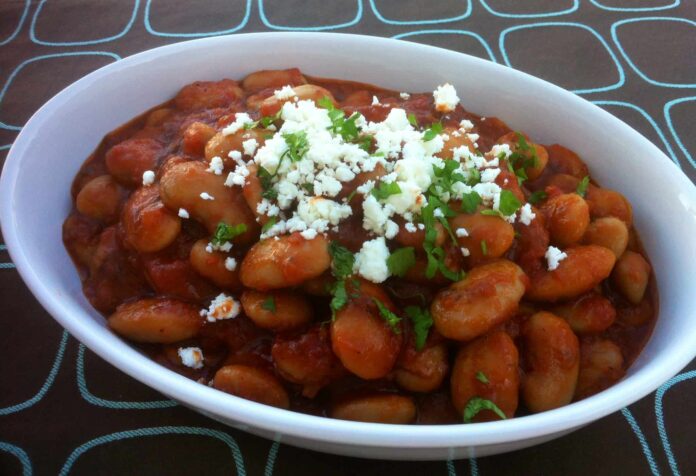There are several ways to look at beans. Some people think it’s harmful and separate them from their diet. while others believe in its beneficial properties and increase their consumption. But which of the following is true? And why am I craving beans so bad? You probably know some edible legumes, such as lentils, chickpeas, beans, and soybeans. They all have different general characteristics and compositions such as taste, appearance, and nutrient content.
Craving Bean:
Beans are one of the most common types of legumes. One cup (256 grams) of boiled beans contains about 19 pieces.
Calories: 215
Protein: 13.4 grams
Fiber: 13.6 grams
Folic acid (vitamin B9): 23% of domestic violence.
Manganese: 22% of the RDI.
Thiamine (Vitamin B1): 20% DV
Copper: 17% of DN
Iron: 17% in DV
High-fiber foods, such as beans, slow down the absorption of sugar into the bloodstream. help reduce blood sugar
A study in 17 people with type 2 diabetes found that eating nuts significantly reduced postprandial blood sugar levels (22 reliable sources).
Craving Nuts-ingredients, benefits and harms, recipes:
Beans are legumes that grow on seeds. Beans come in a variety of colors, such as white, cream, black, red, purple, and spotted, the most common being white and red. Nuts are sold canned and dried. It can be added to salads, soups, stews, pasta, side dishes, and sauces. Nuts are used as a fat substitute for flours and baked goods. Boil the beans over low heat. So the beans can absorb the aroma of spices and other preparations and can keep their shape.
Why are craving beans bad?
When decomposed, uric acid is excreted. And high levels of uric acid can lead to gout if the kidneys are unable to remove the acid. Older adults, children, and people with digestive problems. Be careful when eating nuts to prevent bloating and gas.
Why use bean gas?
Beans, lentils, chickpeas, legumes, and other legumes contain galactooligosaccharides (GOS), which are dietary fibers that the body cannot digest naturally. However, the bacteria in the gut work well, and love these products. but in the process of decay, They will emit gas. Craving beans contain a fiber called oligosaccharides. why am I craving beans so bad? These fibers (al-uh-go-sak-r-rides) are indigestible fermented fibers that produce gas. It feels bad, but it looks good.
This is a good sign that these healthy bacteria are getting better nutrition, support, and improvement through proper food choices. which can prevent diseases related to the intestines and other organs of the body Fiber from foods such as legumes enters the intestines. stimulate growth and promote the functioning of beneficial microorganisms also known as Prebiotics.
The benefits of legumes and their excellent nutritional values have long been known by mankind and it has been proven by science. However, for for-profit, it should be remembered that excessive consumption or improper processing can make this product unhealthy. Beans, lentils, chickpeas, legumes, and other legumes contain galactooligosaccharides (GOS) and fructans, which are dietary fibers that the body cannot digest naturally. However, the bacteria in the gut work well, and love these products. but in the process of decay, They will emit gas. The intensity of gas production varies from person to person. depends on bacteria Some emit more gas than others.
Adding lots of plant fiber to your diet including legumes will increase gas production But regular use of these products can help reduce these side effects. People with irritable bowel syndrome (IBS) are more prone to gas discomfort, so some nutritionists recommend a diet low in GOS and fructose. First, you can add peas or nuts to salads or sprinkle cream on sandwiches.
Why not eat craving beans:
Despite the many useful properties of peas. But there are several different groups in cooking this plant, besides:
For people with dysbiosis, nuts can be dangerous due to the formation of intestinal gas caused by nuts because the body is unable to digest certain polysaccharides.
People with a history of gout or nephritis. Nuts contain pudding and their decay products (uric acid) cannot be excreted through the kidneys and may accumulate in the body too much. This buildup of uric acid can eventually lead to gout or worsening existing conditions.
People with pancreatitis, gastritis, colitis, cholecystitis.
People with lesions of the gastrointestinal mucous.
Side Effects and Allergy to Thirst beans:
Nuts generally do not pose a serious health risk. However, dried beans, lentils, and green peas do not pose a serious health risk. why am I craving beans so bad? It can cause serious staining problems. Phytic acid in green beans binds to calcium, zinc, and other minerals. Prevents it from being absorbed by the body and leads to malnutrition in the body. Beans contain small amounts of lectins. But it can bind to proteins in the intestinal tract and can cause digestive problems. People are also allergic to nuts.
Extensive research shows that regular consumption of soybeans can significantly reduce the risk of cancer. Nuts are rich in antioxidants. The darker the grains, the darker they are. The greater the antioxidant capacity. The study found that Black beans contain 10 times more antioxidants than oranges. Black beans are rich in folic acid and magnesium. Folic acid (not folic acid!) is probably the best-known essential nutrient. Especially for pregnant women in the early stages of pregnancy. Researchers were able to identify a link between increased folic acid consumption and a reduced risk of heart disease. Studies show that increased magnesium intake is also linked to better heart function.
Craving beans and Gas Research:
Healthy adults should eat half a cup of beans (focus, black ice, or dark blue beans) or carrots daily for 8-12 weeks. But after eight weeks it was back to normal. These results may indicate that some people are experiencing gas from eating legumes. But regular consumption of legumes (1/2 cup per day) for 8 weeks can cause bloating and abdominal discomfort.

